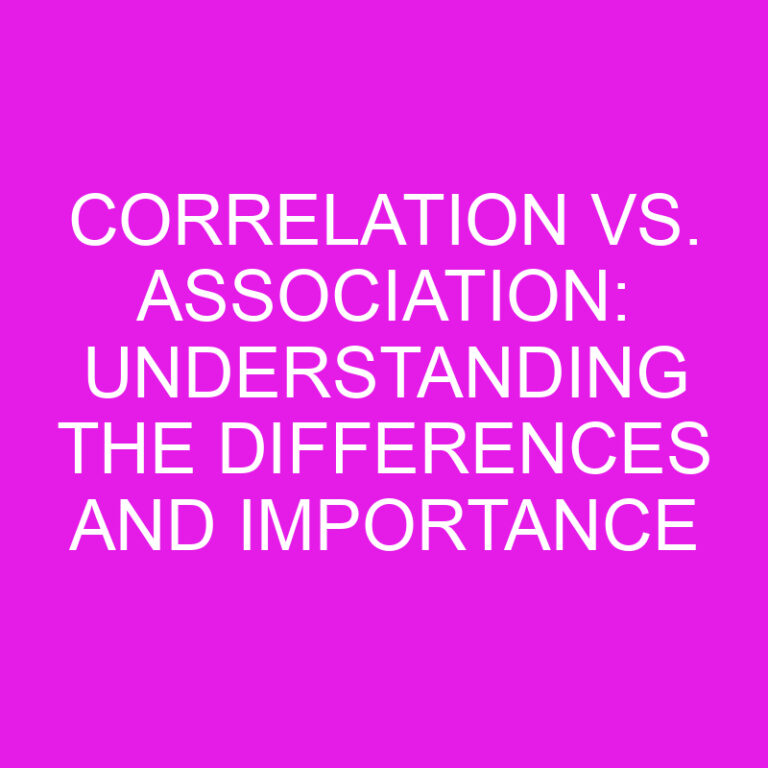
When it comes to language education, there are various approaches that cater to the diverse needs of learners. Two popular methods that often come up in discussions are ESL (English as a Second Language) and bilingual education. While they both aim to help non-native English speakers improve their language skills, there are distinct differences between the two approaches. In this article, I’ll delve into the nuances of ESL and bilingual education, highlighting their unique features and benefits. Whether you’re a student or a parent seeking the most effective language learning method, understanding these differences will help you make an informed decision. So, let’s explore the world of ESL and bilingual education together!
ESL, or English as a Second Language, is an instructional approach specifically designed for non-native English speakers. In an ESL program, the primary focus is on teaching English language skills to individuals who have limited or no proficiency in English. Through targeted instruction, ESL programs aim to develop learners’ listening, speaking, reading, and writing abilities in English. This approach typically involves separate classes or specialized instruction that caters to the specific needs and proficiency levels of the students. With ESL, the goal is to help individuals acquire the necessary language skills to communicate effectively in English, both in academic and everyday contexts.
Post Contents
- Key Takeaways
- What is ESL?
- What is Bilingual Education?
- The Goal of ESL
- The Goal of Bilingual Education
- Differences between ESL and Bilingual Education
- Conclusion
- Frequently Asked Questions
- Q: What is the main difference between ESL and bilingual education?
- Q: What is the objective of ESL programs?
- Q: What is the objective of bilingual education programs?
- Q: Do ESL programs consider the student’s cultural and linguistic background?
- Q: Do bilingual education programs value and preserve the student’s cultural and linguistic identity?
- Q: Are there cognitive benefits to both ESL and bilingual education programs?
- Q: Do students in bilingual education programs perform better than their monolingual peers in standardized tests?
- Q: How should the decision between ESL and bilingual education be made?
Key Takeaways
- ESL (English as a Second Language) is an instructional approach designed for non-native English speakers, focusing on teaching English language skills to individuals with limited or no proficiency in English.
- Bilingual education aims to teach academic content in both the student’s native language and a second language, usually English, recognizing and valuing linguistic and cultural diversity.
- ESL programs emphasize individualized instruction tailored to meet the unique needs and proficiency levels of non-native English speakers.
- Bilingual education programs focus on maintaining and promoting the student’s native language while acquiring English language skills.
- ESL programs provide an immersive language experience, where classes are typically taught in English, offering targeted instruction through interactive activities and real-life scenarios.
- Bilingual education programs have cognitive benefits, enhancing problem-solving skills and cognitive flexibility, and often result in improved academic performance, especially in language arts and reading comprehension.
What is ESL?
In this section, I will discuss what ESL (English as a Second Language) is and how it differs from bilingual education.
ESL is a specific type of educational program that is designed to help non-native English speakers acquire the necessary language skills to communicate effectively in English. It focuses on teaching English language skills to individuals with limited or no proficiency in English.
The goal of ESL is to develop the four core language skills: listening, speaking, reading, and writing. Through targeted instruction, ESL programs aim to build a strong foundation in English language proficiency, allowing individuals to engage in academic and everyday activities in an English-speaking environment.
In ESL classrooms, the curriculum is tailored to meet the unique needs of non-native English speakers. Classes are typically taught in English, providing students with the immersive language experience they need to improve their proficiency. Teachers use a variety of instructional strategies, such as visual aids, real-life scenarios, and interactive activities, to engage students in meaningful language practice.
One of the key features of ESL programs is their emphasis on individualized instruction. Students are assessed for their current language proficiency level and then placed into appropriate classes that align with their needs and abilities. This personalized approach allows students to progress at their own pace and receive targeted instruction that addresses their specific language learning goals.
ESL programs can be found in a variety of settings, including public schools, community colleges, language institutes, and online platforms. They are available to learners of all ages, from young children to adults. Whether someone is looking to improve their English for academic, professional, or personal reasons, ESL programs provide the necessary support and resources to help them succeed.
What is Bilingual Education?
Bilingual education is an educational approach that aims to teach academic content in two languages: the student’s native language and a second language, usually English. This approach recognizes and values the linguistic and cultural diversity of students, providing them with the opportunity to not only learn a second language but also develop proficiency in their native language.
In bilingual education programs, subjects like math, science, and social studies are taught in both languages, with the goal of helping students become bilingual and biliterate. The instruction is typically provided by qualified teachers who are proficient in both languages, ensuring that students receive support and guidance in their language development.
One of the key features of bilingual education is its focus on maintaining and promoting the student’s native language while acquiring English language skills. Studies have shown that this approach has numerous benefits, including improved cognitive abilities, increased cultural awareness, and enhanced academic performance.
There are different types of bilingual education programs, including transitional bilingual education, dual-language immersion, and two-way immersion. Each program has its own unique characteristics and goals, but they all share the common objective of supporting students in becoming proficient in both languages.
Bilingual education is often implemented in schools with a significant number of students who speak a language other than English at home. However, it can also be offered in schools that aim to provide all students with the advantages of bilingualism and multiculturalism.
Bilingual education is an educational approach that aims to teach academic subjects in two languages, allowing students to become proficient in both their native language and a second language, usually English. This approach recognizes the value of linguistic and cultural diversity and has been shown to provide numerous benefits to students.
The Goal of ESL
In ESL programs, the primary goal is to help non-native English speakers acquire the necessary language skills to communicate effectively in English. The focus is on developing listening, speaking, reading, and writing abilities through targeted instruction.
ESL programs are designed to provide an immersive language experience, with classes typically taught in English. This approach helps students become more comfortable using English in real-life situations by consistently practicing the language in a supportive environment.
To ensure that the curriculum caters to the unique needs of non-native English speakers, ESL programs emphasize individualized instruction. This means that students can progress at their own pace and receive targeted support that addresses their specific language learning goals.
By tailoring instruction to the needs of each student, ESL programs foster a supportive and inclusive learning environment. ESL teachers use instructional strategies that promote active learner engagement, such as interactive activities, group discussions, and hands-on projects. This approach encourages students to actively participate in the learning process and develop confidence in using English.
Furthermore, ESL programs recognize the diverse backgrounds and experiences of non-native English speakers. As such, they strive to create culturally responsive classrooms that value each student’s unique linguistic and cultural heritage. By integrating students’ cultural backgrounds into the curriculum, ESL programs help students develop a sense of belonging and cultural pride while learning English.
The goal of ESL is not only to help students become proficient in English but also to empower them with the language skills they need to succeed academically, socially, and professionally. By equipping students with strong English language abilities, ESL programs open doors to various opportunities and pave the way for a brighter future.
So, as we can see, the goal of ESL programs is to provide non-native English speakers with the tools they need to navigate an English-speaking society successfully. Through individualized instruction, immersive experiences, and cultural responsiveness, ESL programs aim to empower students to communicate effectively and thrive in their bilingual journey.
The Goal of Bilingual Education
In bilingual education programs, the primary goal is to teach academic content in two languages: the student’s native language and a second language, typically English. This approach recognizes and values the linguistic and cultural diversity of students, providing them with the opportunity to develop proficiency in both languages.
Bilingual education goes beyond English language acquisition; it aims to maintain and promote the student’s native language while acquiring English language skills. By teaching subjects like math, science, and social studies in both languages, bilingual education programs provide a foundation for students to excel academically in multiple languages.
One of the key benefits of bilingual education is the improvement of cognitive abilities. Research has shown that bilingual individuals demonstrate enhanced problem-solving skills, creativity, and critical thinking. The ability to switch between languages also develops cognitive flexibility, which can have a positive impact on overall brain function.
Furthermore, bilingual education programs foster cultural awareness and appreciation. By immersing students in multiple languages and cultures, these programs promote understanding and respect for diverse perspectives. This cultural competency is crucial in our increasingly interconnected global society.
Bilingual education has also been linked to improved academic performance. Studies have shown that students in bilingual programs often outperform their monolingual peers on standardized tests, especially in areas related to language arts and reading comprehension.
Overall, the goal of bilingual education is to provide students with the advantages of bilingualism and multiculturalism. It gives them the tools to succeed academically while embracing their linguistic and cultural heritage. Through bilingual education, students can become proficient in multiple languages, opening doors to expanded academic, social, and professional opportunities.
Differences between ESL and Bilingual Education
When it comes to language education, two commonly used approaches are ESL (English as a Second Language) and bilingual education. While both aim to help non-native English speakers acquire language skills, there are significant differences between the two.
1. Instructional Approach
ESL programs primarily focus on teaching English to non-native speakers. The curriculum is designed to develop listening, speaking, reading, and writing skills in English. In ESL classrooms, instruction is delivered in English to provide an immersive language experience. On the other hand, bilingual education programs incorporate instruction in both the student’s native language and English. Subjects such as math, science, and social studies are taught in both languages, allowing students to learn academic content while developing language proficiency.
2. Language Development Goals
The primary goal of ESL programs is to help students become proficient in English. The emphasis is on acquiring the necessary language skills to effectively communicate in English. In contrast, bilingual education aims to build proficiency in both the student’s native language and English. These programs recognize and value linguistic and cultural diversity, aiming to maintain and promote the student’s native language while acquiring English language skills.
3. Cultural and Linguistic Identity
ESL programs typically focus on English language instruction without significant attention to the student’s cultural or linguistic background. While they strive to create culturally responsive classrooms, the primary focus remains on English language acquisition. Bilingual education programs, however, value and preserve the student’s cultural and linguistic identity. By incorporating instruction in the student’s native language, these programs promote cultural awareness and appreciation.
4. Cognitive Benefits
Both ESL and bilingual education programs offer cognitive benefits. However, bilingual education programs have been shown to have a more profound impact on cognitive development. Research has found that bilingual individuals demonstrate enhanced problem-solving skills, creativity, and critical thinking. Switching between languages develops cognitive flexibility, which positively impacts overall brain function.
5. Academic Performance
Studies have consistently shown that students in bilingual education programs often outperform their monolingual peers in standardized tests, especially in areas related to language arts and reading comprehension. The foundation of academic content in both languages equips students with a broader skill set to excel academically.
It is essential to understand that the differences between ESL and bilingual education highlight that each approach has its own unique strengths and goals. Ultimately, the choice between the two depends on the specific needs and preferences of students and their communities.
Conclusion
The article has shed light on the key differences between ESL and bilingual education. It has been established that ESL programs primarily focus on teaching English to non-native speakers, while bilingual education incorporates instruction in both the student’s native language and English.
ESL programs aim to develop proficiency in English, while bilingual education aims to build proficiency in both the student’s native language and English. Furthermore, ESL programs tend to prioritize English language instruction without significant attention to the student’s cultural or linguistic background, whereas bilingual education programs value and preserve the student’s cultural and linguistic identity.
Both ESL and bilingual education programs offer cognitive benefits, but bilingual education has a more profound impact on cognitive development. Students in bilingual education programs often outperform their monolingual peers in standardized tests, particularly in language arts and reading comprehension.
Ultimately, the choice between ESL and bilingual education depends on the specific needs and preferences of students and their communities. It is important to consider factors such as language proficiency goals, cultural preservation, and cognitive development when making this decision.
Frequently Asked Questions
Q: What is the main difference between ESL and bilingual education?
A: ESL programs focus solely on teaching English to non-native speakers, while bilingual education programs teach academic content in both the student’s native language and English.
Q: What is the objective of ESL programs?
A: ESL programs aim to develop students’ proficiency in English, including listening, speaking, reading, and writing skills.
Q: What is the objective of bilingual education programs?
A: Bilingual education programs aim to build proficiency in both the student’s native language and English while teaching academic content in both languages.
Q: Do ESL programs consider the student’s cultural and linguistic background?
A: ESL programs typically focus on English language instruction without significant attention to the student’s cultural or linguistic background.
Q: Do bilingual education programs value and preserve the student’s cultural and linguistic identity?
A: Yes, bilingual education programs value and preserve the student’s cultural and linguistic identity while providing instruction in both languages.
Q: Are there cognitive benefits to both ESL and bilingual education programs?
A: Yes, both ESL and bilingual education programs have cognitive benefits, but bilingual education has a more profound impact on cognitive development.
Q: Do students in bilingual education programs perform better than their monolingual peers in standardized tests?
A: Yes, students in bilingual education programs often outperform their monolingual peers in standardized tests, especially in the areas of language arts and reading comprehension.
Q: How should the decision between ESL and bilingual education be made?
A: The choice between ESL and bilingual education depends on the specific needs and preferences of students and their communities.






